240z Vs 260z
Datsun 240Z-260Z (1970-1975): Buyers' Guide
Presented by
 Datsun 260Z
Datsun 260Z 
 Datsun 260Z
Datsun 260Z 
 Datsun 260Z
Datsun 260Z 
 Datsun 260Z
Datsun 260Z 
 Datsun 260Z
Datsun 260Z 
 Datsun 260Z
Datsun 260Z 
 Datsun 240Z
Datsun 240Z 
 Datsun 240Z
Datsun 240Z 
 Datsun 240Z
Datsun 240Z 
 Datsun 240Z
Datsun 240Z 
 Datsun 240Z
Datsun 240Z 
 Datsun 240Z
Datsun 240Z 
 Datsun 240Z
Datsun 240Z 
 Datsun 240z - 260z
Datsun 240z - 260z 
 Datsun 260Z
Datsun 260Z 
 Datsun 260Z
Datsun 260Z 
 Datsun 260Z
Datsun 260Z 
 Datsun 260Z
Datsun 260Z 
 |
| Datsun 260Z |
 |
| Datsun 260Z |
 |
| Datsun 260Z |
 |
| Datsun 260Z |
 |
| Datsun 260Z |
 |
| Datsun 260Z |
 |
| Datsun 240Z |
 |
| Datsun 240Z |
 |
| Datsun 240Z |
 |
| Datsun 240Z |
 |
| Datsun 240Z |
 |
| Datsun 240Z |
 |
| Datsun 240Z |
 |
| Datsun 240z - 260z |
 |
| Datsun 260Z |
 |
| Datsun 260Z |
 |
| Datsun 260Z |
 |
| Datsun 260Z |
For years, the Japanese car industry craved credibility and respect. That was duly delivered with the iconic Datsun Z-car. Cliff Chambers acts as your guide to current form
Datsun 240Z-260Z (1970-1975)
The 1960s was the age of the 'dream car' and choice regardless of your price range was bewildering. Lamborghini joined established exotica such as Aston Martin, Ferrari and Jaguar while even Holden produced a delectable two-door. What few ever considered was that a two-seater from Japan could be even remotely desirable.
Jaguar's gorgeous E Type was at the top of most 'must have' lists but beyond the reach of most aspirants. Then along came the clever ladies and gents from Nissan with their 240Z.
Nissan's designers would take the long nose and swooping profile of the Jaguar, fit their grunty six-cylinder engine with obligatory twin side-draft carburettors, a five-speed gearbox (where Jaguar began with a pre-WW2 four-speed), independent rear suspension and the practicality of a top-hinged rear hatch.
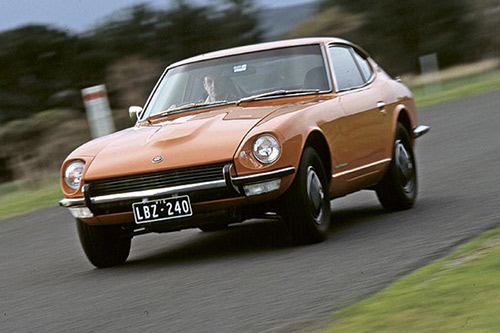
The Z was announced late in 1969 and Australia saw its first cars a year later. All were five-speed manuals but later arrivals included a smattering of three-speed automatics. Pricing was just shy of $5000 – yes, more expensive than a GTHO Falcon – and way dearer than the more comparable Ford Capri V6.
However, media here and in the USA (where 95 per cent of export sales occurred) did Nissan a huge marketing favour by testing the Z against incompatible offerings from brands with established names and sporting pedigrees.
Mismatches included pitting a 240Z against Triumph's old-fashioned TR6, four-cylinder Alfa Romeos, Lancias and even the wholly mediocre Triumph Stag.
Potential buyers were unlikely to see Z cars heading the pack at an Australian motor sporting event, however in the USA they held off Triumph TRs and Porsches to dominate their class at Sports Car Club of America meetings.
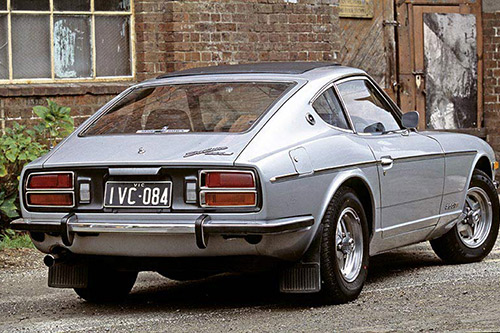
Rally competition was more productive and took the Z to world prominence. The cars twice won the tough East African Safari plus a string of European events. In Australia, Nissan stalwart Ross Dunkerton took the national Rally Championship three times from 1974-76.
The 2.6-litre 260Z was launched in mid-1974; a bad time to be selling cars in Australia or anywhere really. The world market was dominated by fears of fuel shortages and new US safety rules. Over here, inflation and compliance costs rose in unison but other models were in far worse shape than Datsun with its uprated two-seater and practical new 2+2.
Improvements included an extra 7.5kW of power, lower gearing to improve acceleration, wider, better-quality tyres and revamped seats. Ventilation had been upgraded in 1973 but still produced a hot cabin on summer's days and air-conditioning was a welcome option.
Despite all the forces aligned against it, Nissan held prices to such realistic levels and offered a package so attractive that it pretty much wiped out its British and European rivals. By late 1977 more than 650,000 had been sold.
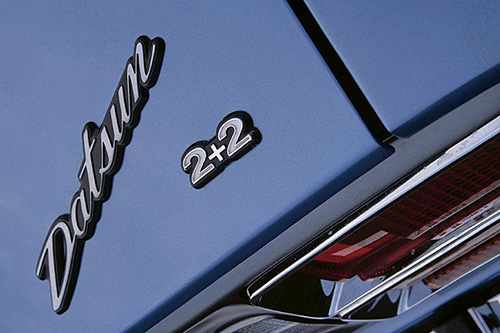
ON THE ROAD
In common with photo-car owner David Toleman, I was at one time in the market for a Datsun Z. I inspected perhaps a dozen and drove several including a super-quick Improved Production rally rocket. Unlike David, the prospect of chasing parts and removing extensive amounts of rust didn't appeal and I walked away from the lot and into the arms of a locally-made Skyline GTS.
Moving into today's market, the parameters are very different. Most people seeking Z ownership now won't have the intent of driving it more than a day or two a week, let alone as regular transport.
Cars with the 'right' exhaust note and their carburettors in tune will still make keen motorists smile. Those with up-spec engines, modernised suspension and improved brakes will spark big grins and the odd audible chuckle.
You sit fairly low with a big steering wheel perfectly placed and the tricky five-speed shifter close by. Avoid automatics if you enjoy your driving; they are dire.
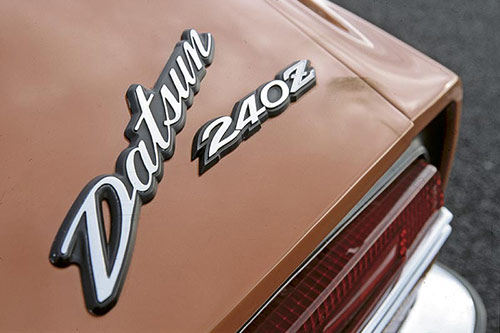
Early cars take a while to get cracking due to the high first gear and axle ratio. However, they will reach 109km/h in second while third will fling you from 80-110km/h in five seconds or so.
The standard steering worried some testers when the cars were new and scared a few when cross-winds at high speeds carted them across the centre-line. Perhaps because of modern tyres or improved suspension bushings this instability now seems less of a problem. However, if you intend using your Z on race tracks or for high-speed road events, several kinds of front spoiler are available.
Standing start acceleration from the lower-geared 260Z saw 0-100km/h times drop below nine seconds. Most in today's market should be faster as there now exist very few cars with engines in factory-stock condition.
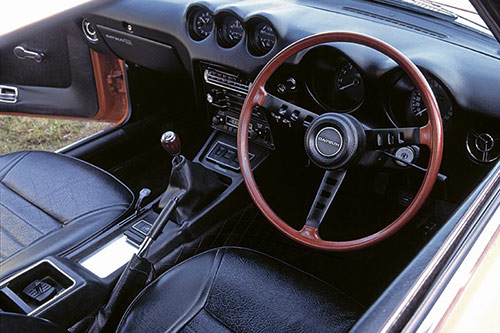
Enlarged carburettors, altered induction and exhausts plus some camshaft remodelling are the basics, after which you can start looking for a 280 block, trios of Weber carbs in place of twin Hitachis and perhaps a turbocharger. Turn up to any historic race day or tarmac rally and you will find Z cars punching out sufficient kWs to make late-model machinery look pretty ordinary.
The 2+2 version once was popular with trendy parents and guaranteed to generate envious stares in the school drop-off zone. It's likely that today the response will be no less positive.
BUYING
Where do you go to buy a good two-seat Z-car and not pay a squillion? Well, you could try zapping yourself back to about 1993 when people who had sunk mega-money into restoring them were being torpedoed by interest rates and/or unemployment.
Since the late 1990s, values for 240 and 260Zs have climbed steadily and in unison with world-wide demand. Absolutely excellent 240s selling late last century cost $10-12,000 and by 2008 had made their way to $20,000. Today the mark is somewhere on the high side of $60,000, with two and four-seat versions of the 260Z lagging some way behind. Rare collectibles like the 240Z-based Japanese domestic market Fairlady Z432 reach well over $300,000 at auction.
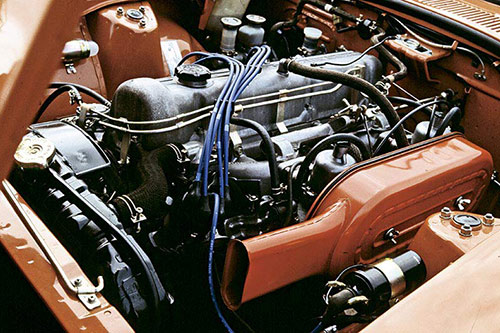
Worn, torn, rusty and incomplete cars still exist and are far more likely to survive intact than was the case 20 years ago.
Where to go for really good cars is difficult to know. There is a very active owners club with branches across the country. However you can bet that cars worth having are all spoken for should they come onto the market.
That leaves specialist Datsun service and parts providers and wandering the displays and car parks at motoring events, poking 'I want to buy your Z' cards under the wiper blades of possible purchases.
BUYER'S CHECKLIST
Body/Chassis
Cars that were 'restored' some time ago when values didn't justify comprehensive rust removal can be harbouring a range of nasties. If the doors droop and are hard to close the problem might be worn hinge pins. It could also be that the mounting points have weakened due to rust. Feel inside the wheel-arches and window surrounds for bubbling, look above and below floor-pans for rust and be wary of a hatch that is difficult to close or is letting in water and exhaust fumes. Some parts including door skins and rust repair sections can be sourced but rusted sections of the steel frame and floor-pans, firewall and turret must be cut out and remade. If you can't do that yourself the process can be enormously expensive. Reproduction bumpers are available, but inspect before buying so you're happy with the quality
Engine & Transmission
Six-cylinder Nissan engines are simple and very durable. Turbocharged versions can develop prodigious amounts of power but need more frequent maintenance than stock motors. Listen for valve train rattle (not too serious) or low-frequency bearing rumbles which will involve a rebuild. Underbonnet accessories can mostly be replaced or repaired, however items like genuine carburettors and the electronic ignition are very difficult to locate. Installing a brand new set of three Weber carbs costs less than $2000.
Suspension & Brakes
Z-car steering was vague from the outset, however more than 20mm of slop at the wheel or binding/cracking noises when turning tightly at low speeds are not normal. Owners who have altered springs, bushings and shock absorbers have doubtless altered the original car's ride/handing balance, and not always for the better. If it bounces a lot on relatively smooth roads there's some expenditure ahead but if you want a car that mostly will do track days then stiff springing may be perfect. The front disc/rear drum brakes were marginal even in 1970 and some owners enlarged the rotors and added discs to the rear.
Interior & Electrical
Dash-tops will often come with moulded mats that conceal cavernous cracks. A new mat costs about 80 bucks but new plastic isn't currently available. Reproduction door trims for some versions are available but expensive, so too are window runners and other door internals. 240Z trafficator arms are available new but at horrific expense (up to US$900) with light/wiper controls around $500.
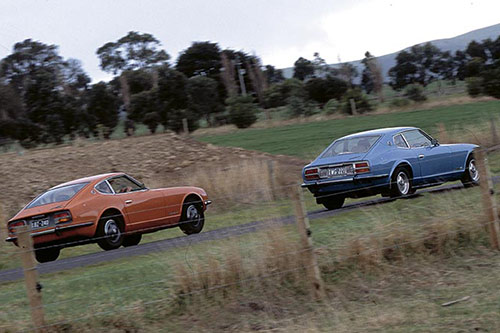
SPECIFICATIONS
Datsun 240-260z (1970-1975)
Number built: 622,649 (all types)
Body: steel integrated body/chassis two-door coupe
Engine: 2393cc or 2565cc 12v overhead camshaft six-cylinder with twin side-draft carburettors
Power & Torque: 119kW @ 5600rpm, 205Nm @ 4400rpm (260Z)
Performance: 0-100km/h: 8.9 seconds, 0-400 metres 16.3 seconds (260Z)
Transmission: 5-speed manual, 3-speed automatic
Suspension: Independent with Macpherson struts, coil springs, anti-roll bar (f); Independent with coil springs, struts, trailing arms (r)
Brakes: front disc, rear drum with power assistance
Tyres: 195/70VR14 radial
Price range: $8000-65,000 (base 240Z)
Contact: Z Clubs in several States
www.ndsoc.com.au/
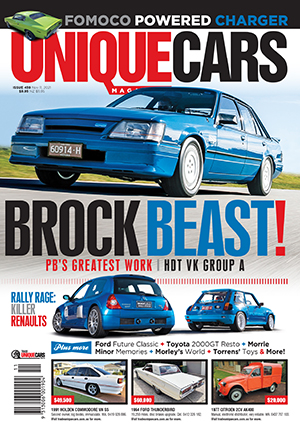
Subscribe to Unique Cars magazine for 12 months and save!
Australia's classic and muscle car bible. With stunning features, advice, market intelligence and hundreds of cars for sale.
Subscribe
Source: https://www.tradeuniquecars.com.au/buyers-guide/1506/datsun-240z-260z-%281970-1975%29-buyers-guide


0 komentar:
Posting Komentar